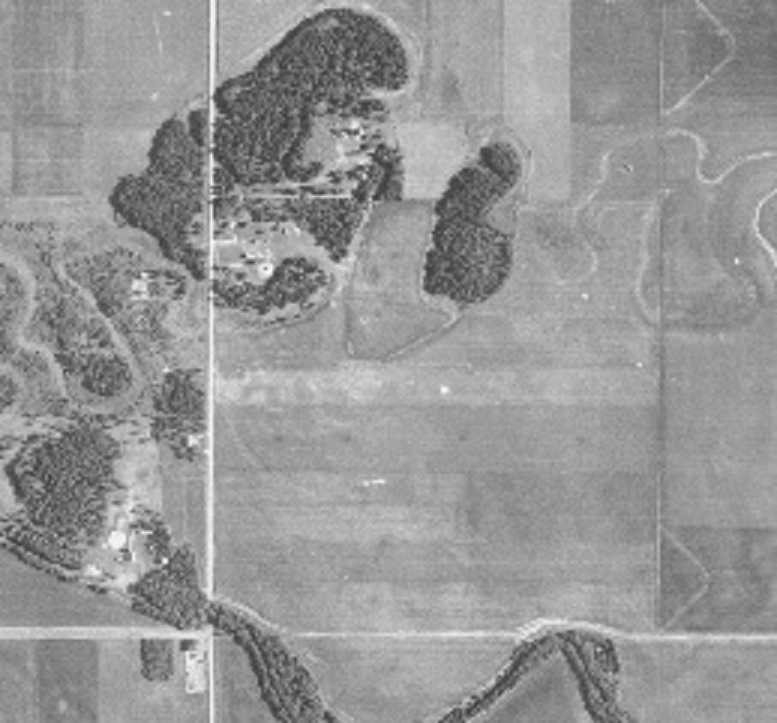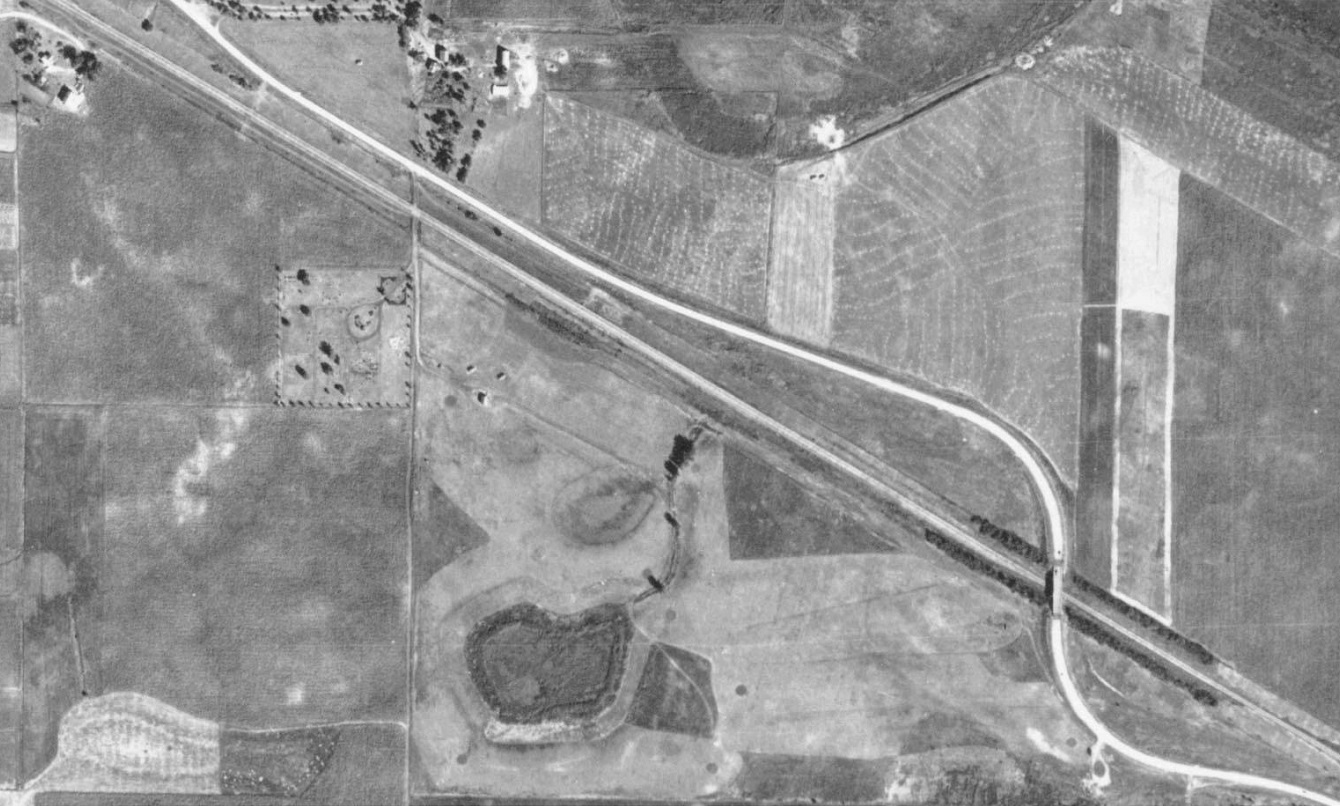I could go either way on this group of lost golf courses.
This way: Keep digging. Dig deep enough, you’ll miss another two dozen lost courses in Minnesota and hit one in China instead.
Oh, stop it. You know darn well you were told as a kid that if you kept digging, you’d hit China.
Anybody know how to yell “Fore!” in Mandarin?
Or thataway: Cut bait. Tell folks what little you know about these lost courses, and cut your losses.
For now, I’m going thataway.
Here are a few more of Minnesota’s lost golf courses, their short stories and their very short stories. In all cases, I either reached dead ends in coming up with more information or, I confess, wasn’t sufficiently motivated to try. (So many other lost courses out there to track down. So little time.)
WARREN
“Work Started on Links at Warren,” read the headline on a one-paragraph story in the Minneapolis Tribune of May 15, 1932. The story said the golf course would be 3 1/2 miles west of the city, which is in Marshall County and 25 miles northeast of Grand Forks, N.D. The story said the Warren course would open for the 1933 season.
But that probably wasn’t the start of golf in Warren.
An Aug. 23, 1931, story in the Minneapolis Star Tribune reported on a Red River Valley Golf association tournament to be played in early September at the Minakwa course in Crookston. More than a dozen clubs were expected to have entrants, including Warren.
Whether that means there was a golf course in Warren before 1932, I can’t say. But a Warren Sheaf story from May 4, 1932, implied that a new site was being prepared on the Dudley Cheney farm, with more than 50 signed memberships for the golf club. Cheney was to operate and maintain the course.
According to a 1928 plat map, Dudley Cheney owned a plot in Boxville Township, 3 1/2 miles west-southwest of downtown Warren, near the intersection of what is now Marshall County Highway 104 and 210th Street Northwest. The Snake River crossed the very southwest corner of Cheney’s land. Most likely, this is where the golf course was built in 1932, though I could not confirm that with anyone.
(By the way, Dudley Cheney’s wife “was in Warren having some dental work done last Wednesday,” according to the Warren Sheaf of Jan. 24, 1917. Which of course is neither here nor there nor any-darn-where, but I just thought I’d include it to show the depths to which community reporting in long-ago newspapers sometimes descended.)
In late May of 1932, the Sheaf reported, Grand Forks golf professional Walt Arneson arrived to lay out the Warren course on the Cheney farm. Arneson was a University of North Dakota golf coach and a pro at Grand Forks Country Club and the municipal course (presumably Lincoln) in Grand Forks who is credited with having laid out Grand Forks CC as well as courses in Grafton, N.D., and Red Lake Falls, Minn. (more on that lost course coming soon).
The Sheaf’s account of Arneson’s arrival included the superlatives typically attached to reporting on golf courses all across Minnesota, from all eras.
“Possibilities of making the Warren course one of the sportiest courses in the Northwest were expressed by Mr. Arneson who … was impressed with the natural surroundings of woodlands and water hazards caused by coulees.” Arneson was later to have staged a four-hole exhibitions on the grounds, which was to cover more than 3,000 yards and include two holes longer than 300 yards.

The golf course did not open at the crack of springtime in 1933. It took until June 21 for the Sheaf to report in a headline, “Warren Golf Course Ready for Playing.” And it took until July 12 for the Sheaf to make it definitive, including attaching a name to the grounds. “Oakwood Golf Course Will Be Opened Sunday,” the headline read, with the otherwise only notable detail being that the course would have a par of 35.
After that, I found no mentions of golf in Warren until the Warren Riverside course was established just outside the northeastern corner of the city limits. Internet entries variously report the Riverside’s founding year as 1946 and 1950. It remains in operation.
FERTILE
An August 1928 Minneapolis Tribune story detailed a “first annual” (redundant, I know, I know) Red River Valley Golf association tournament at the Minakwa course in Crookston. Six golfers from Fertile were among the field of 100 expected entrants.
In August 1931, the same organization held a tournament, again at the Minakwa course and again with Fertile golfers expected to participate.
Confirmation that there once was a course in Fertile, a Polk County city 25 miles southwest of Crookston, comes in the form of a Crookston Daily Times story of July 23, 1931, in which 16 golfers from Minakwa were headed for a match in Fertile. And in August 1931, Fertile was identified by the Minneapolis Tribune as the host club and defending title holder in “the annual Tri-City Golf tournament … with entries from Twin Valley, Fertile and Ada (home of western Minnesota’s first golf course).
All that said, I have only two things to add: 1) I have no information on exactly where the Fertile course was or when it was abandoned; and 2) as a longtime newspaperman, I am proud of myself for having written a few paragraphs about Fertile without so much as alluding to the infamous, alleged newspaper headline about the town.
Oops, I guess I just did.
Note: The current Sandhill River Golf Course in Fertile was established in 1997.
KERKHOVEN
There is a word known as bass followed by a non-word as ackward — sorry, I usually try to keep this web site rated G — that can be united to form a word that fits my depth of knowledge on the two lost courses in Kerkhoven, a city of 700, situated 110 miles west of St. Paul in Swift County.
I’ll start with what I’ll call the bass part, and no offense intended in any fashion.
I was able to come up with a half-dozen nuggets on the original Kerkhoven Golf Club, on the southeast side of town.
“A nine-hole golf course opened in this city,” reported the St. Cloud Times on Aug. 12, 1931, the reference being to Kerkhoven.
The Kerkhoven Banner had reported on the development about a month earlier.
“The Kerkhoven nine-hole golf course was officially opened to the public last Sunday and every evening since that time has been crowded to capacity,” the Banner reported. A greens fee of 50 cents was being charged for public play, with no fee for charter members.
The Banner reported that the nearest golf course was in Benson, though that point is arguable. Benson Golf Club, 16 miles northwest of Kerkhoven, was established in 1925; Willmar Country Club, now known as Eagle Creek Golf Club, whose first nine holes were designed by the estimable Tom Vardon, was established in 1931 and is 14 miles southeast of Kerkhoven.
Anyway, back to Kerkhoven. On Aug. 14, 1931, the Banner published an admonition. “Because of the popularity of the Kerkhoven Golf course, for the purpose of protecting the children . … No children of members shall play on the course on Sundays or holidays or after three o’clock P.M. weekdays.” No caddies were permitted to carry bags on the course without registering. The club had 41 members and was planning to stage a tournament.
I don’t know how long this iteration of golf in Kerkhoven lasted, though a 1938 aerial photo shows a golf course that appears to have been still operating or at most had only recently closed.

Which brings us to ackward, i.e. Kerkhoven’s second lost course — ackward because it’s a relatively recent lost course, and I know almost nothing about it. A Banner story from 1975 reported that the club would be in operation soon. The course was on the northeast side of town, near County Highway 6. I talked with a couple of people who played the course but passed along few details, other than that it also had sand greens and an “honest-john” can in which patrons would deposit their greens fees. The grounds were leased to the club by a local farmer, and the course ceased to exist when a lease agreement could no longer be worked out.
Kerkhoven’s current golf course is on the northwestern edge of town.
I have no doubt there are people who have more salient memories of Kerkhoven’s second lost course. I would love to hear from any of them.
RENVILLE
Indications are that this southwestern Minnesota city’s golf course was short-lived.
“Renville Golf Course To Open Sunday, June 16th,” read a headline in the June 7, 1928, Renville Star Farmer. “The Renville Golf Club organized a few weeks ago have succeeded in building on the old fair grounds site a small golf course especially suited for the needs of this city,” the newspaper reported. Annual dues were set at $5.
On June 17, 1928, the Minneapolis Tribune reported that a shortstop had been held at the Renville golf course.
But I found only one other mention of the course, and it was perhaps foreboding. Later in June, the Star Farmer reported that an “important” meeting was to be held concerning the club. It’s a wild guess, but I’m thinking the club disbanded and the course was abandoned by late summer of 1928.
I confess I know more about common wrens than I know about Renville, so I can’t say where the “old fair grounds” were. The Renville County Fair is now held in Bird Island (speaking, I guess, of wrens). Inquiries about the city of Renville’s fair grounds site have to date gone unanswered.
Update, May 2018: A 1930 listing of Minnesota golf courses lists a six-hole course in operation at Renville, so my speculation that the course was gone by summer 1928 obviously is incorrect.
